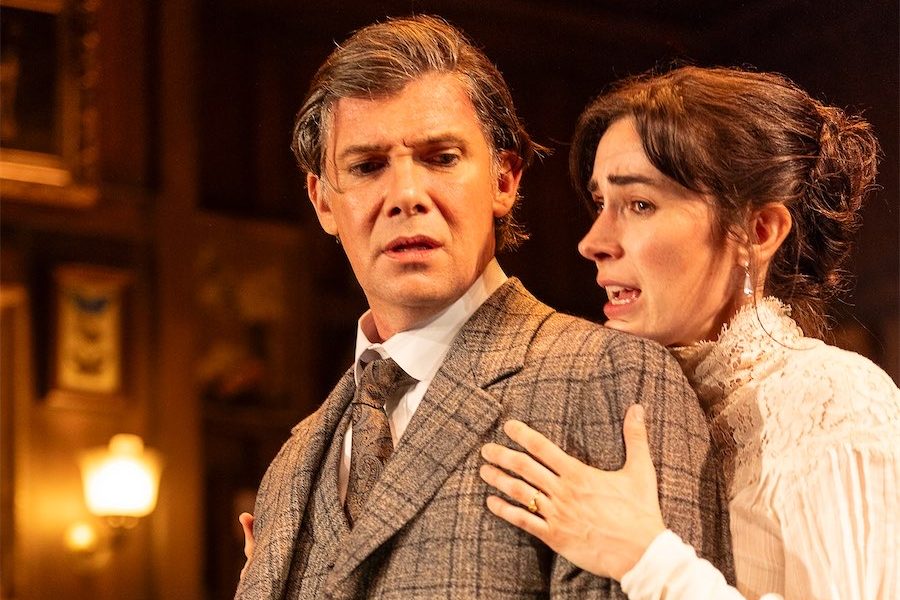
Music / “Neeman Piano Duo in Concert”. At Larry Sitsky Recital Room, ANU, August 9. Reviewed by ROB KENNEDY.
PIANO compositions cover the gamut of styles of music, but when it’s one piano for four hands, and almost all the music has been arranged, the piano can interpret orchestral, choral and other forms.
In the second concert of this mini piano festival put on by the ANU School of Music, the husband-and-wife team of Stephanie and Edward Neeman began with “Sheep May Safely Graze”, by JS Bach, arranged by Edward Neeman.
This tune, from the Cantata BWV 208 with both performers at the one piano, sounded as clean and clear as this reviewer has ever heard it. With a slightly contemporary feel, the distinctive melody had splashes of colour in the treble that made it sound cinematic. The playing was, of course, as fine as it gets from this husband-and-wife team of high-quality musicians.
Beethoven’s “Variation on a theme by Count Waldstein”, written in 1792, was again arranged by Edward, as were all but one of the pieces performed in this mini festival.
These seven short variations have a grand finale as a finish. It is a classic example of how to write music and keep writing it based on one theme. It ranges from simple to complex. The timing exhibited by both players was clockwork-like, which perfectly captured the scalic passages and the melodious tune.
The “Suite en forme de valses”, by Melanie Bonis, (1858-1937), in five movements, is a major musical treat. Apart from the dance rhythms, it sounded Russian, French and delightfully lyrical as well. While there is an orchestral accompaniment to this suite, it worked perfectly as chamber music. Both players adapted seamlessly to each new style of dance tune. It was gorgeous music, gorgeously played.
This duo knows each other’s performance styles well. Their facial communication with one another is not just for the sake of musical expression, but it’s also affectionate. Their timing is so together that from the back of the room their synchronised breathing could be heard and even their flair was perfectly in sync. The “Pas de deux” from “The Nutcracker”, by Tchaikovsky came next.
Originally written for two pianos, but arranged for one with four hands by Edward, the “Andante et Scherzettino”, by Cecile Charminade, is a short work, song-like, but not emotional. It held powerful themes and a flowing style that captured an even walking pace before breaking into a sprint in the Scherzettino.
Samuel Barber’s “Canzone”, from his “Piano Concerto”, begins as a wandering melody, then becomes threatening and slightly disturbing. The melody remains underneath, but all around there’s a confused expression that takes over. That said, it remained a beautiful expressive work and the playing was just perfection.
The “Serpent’s Kiss”, by American composer William Bolcom (b. 1938), is a take on the biblical story of the snake tempting Eve. It was exceedingly comical and intentionally overly dramatic. It even had foot stomping among its crashing chords. The players chased each other around the keyboard. It went into vaudevillian territory and had touches of “Ragtime”. Then Stephanie stood and tapped out a rhythm on the piano as Edward accompanied and then joined in on the tapping. It could have been the soundtrack to a Keystone Cops film. It was played with all the animated effect the two could muster. Both whistled a comical tune at the end.
One would have thought that little could top that. But an encore where they played over each other’s hands with music fast and loud made the “L’chaim” from “Fiddler on the Roof” one of the most amazing encores.
Who can be trusted?
In a world of spin and confusion, there’s never been a more important time to support independent journalism in Canberra.
If you trust our work online and want to enforce the power of independent voices, I invite you to make a small contribution.
Every dollar of support is invested back into our journalism to help keep citynews.com.au strong and free.
Thank you,
Ian Meikle, editor




Leave a Reply